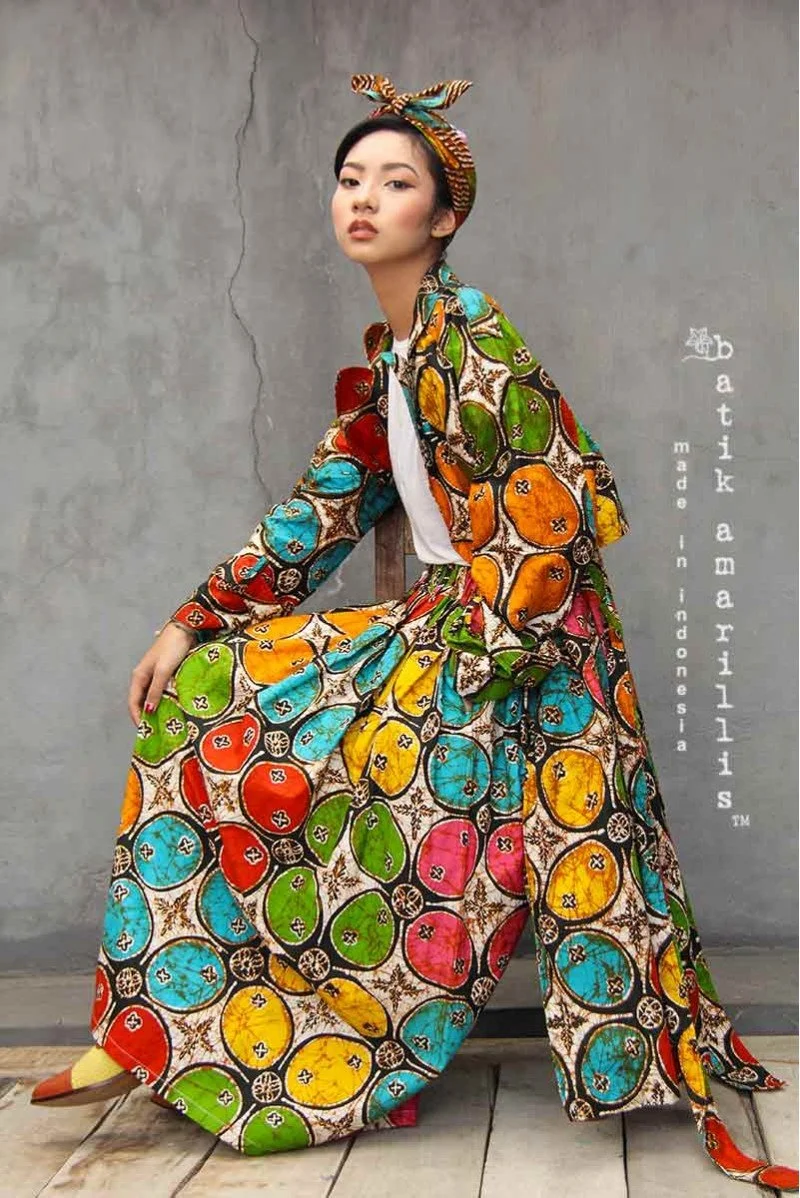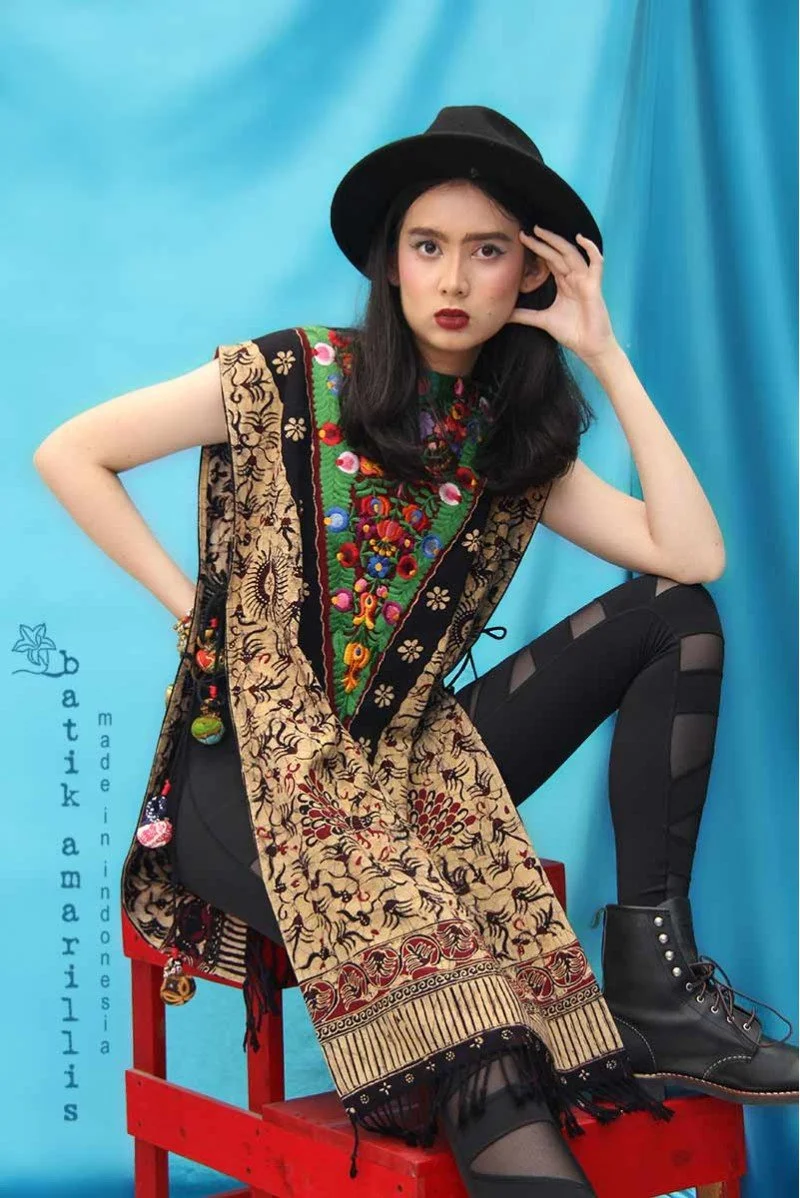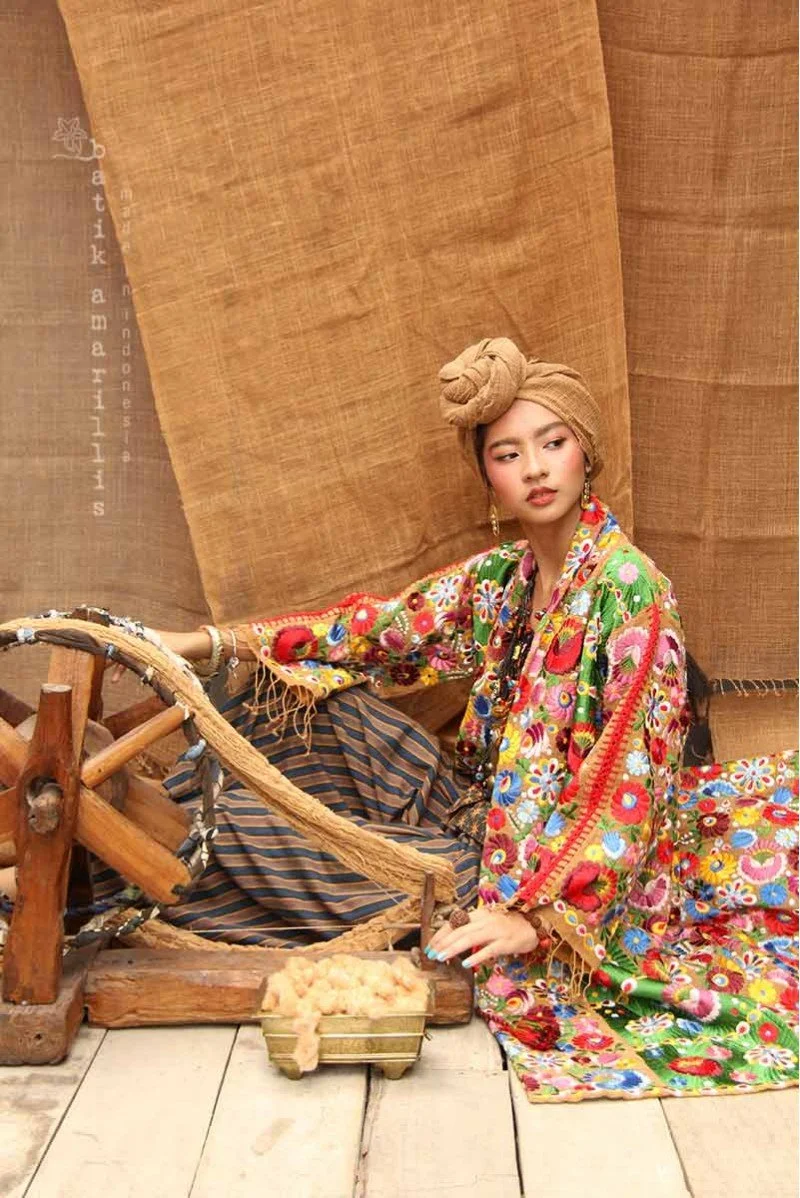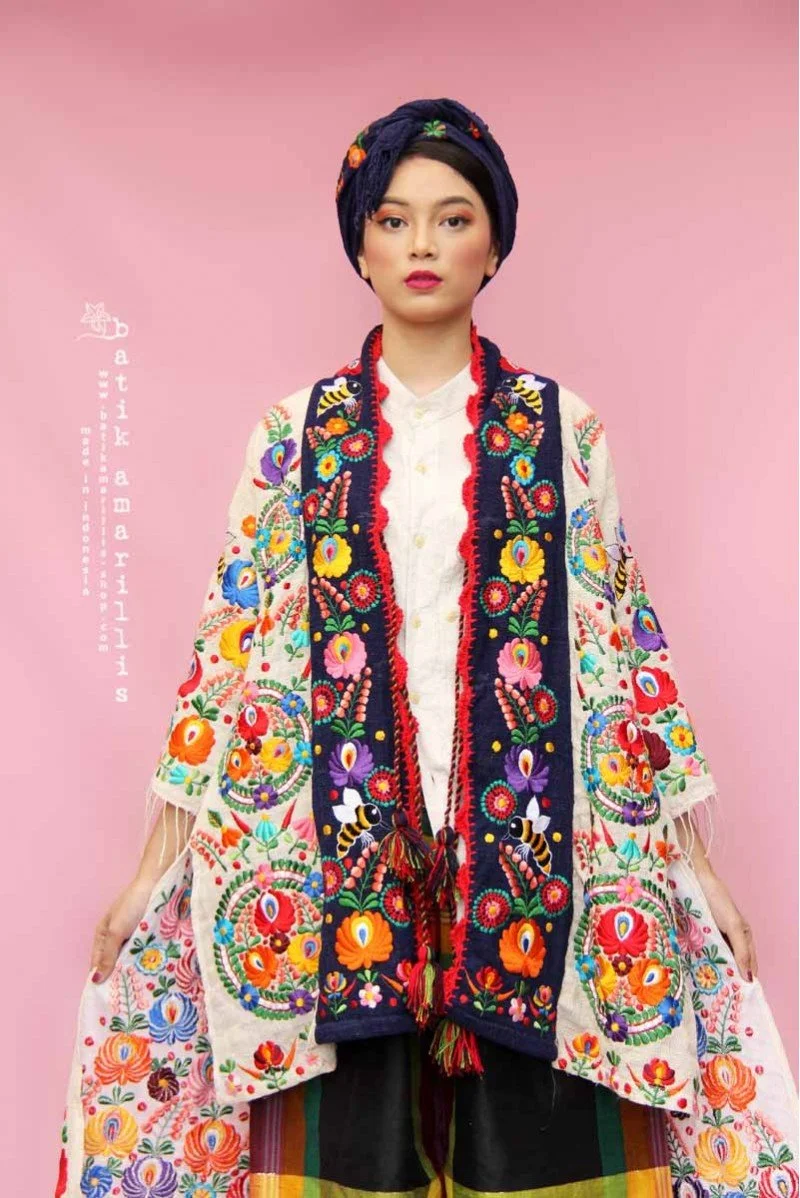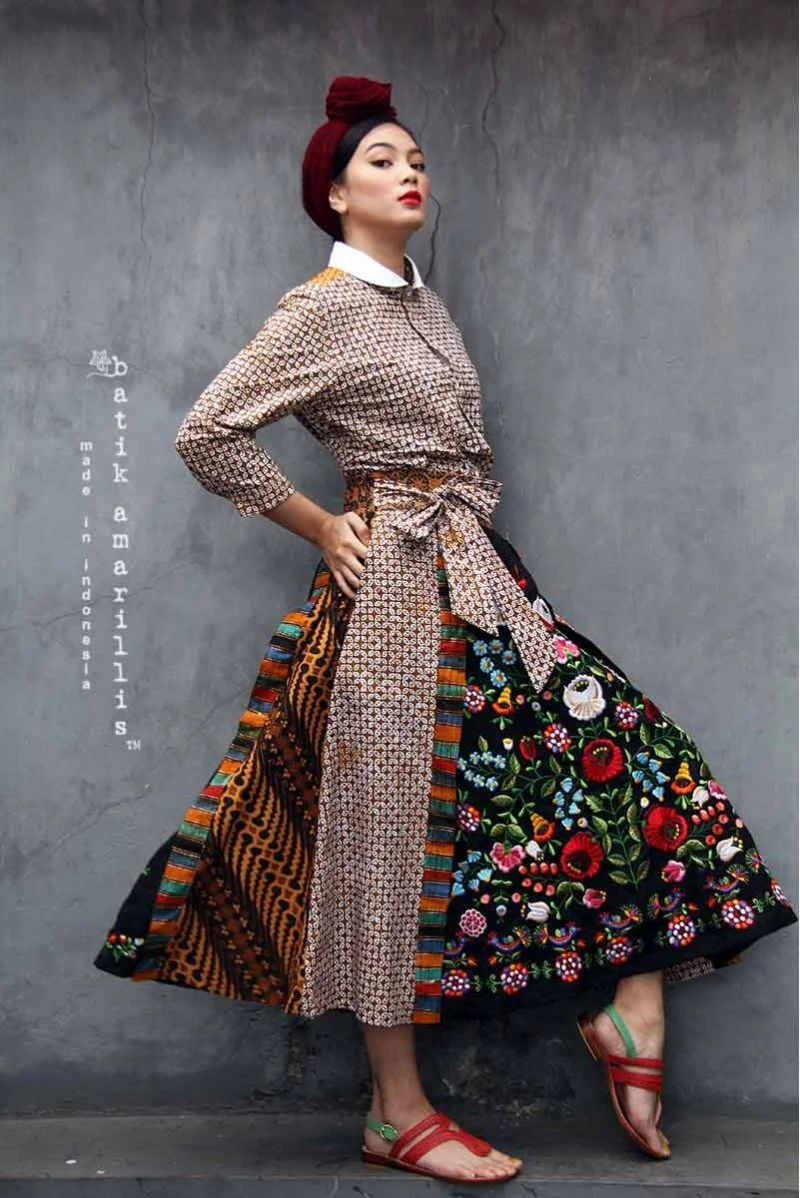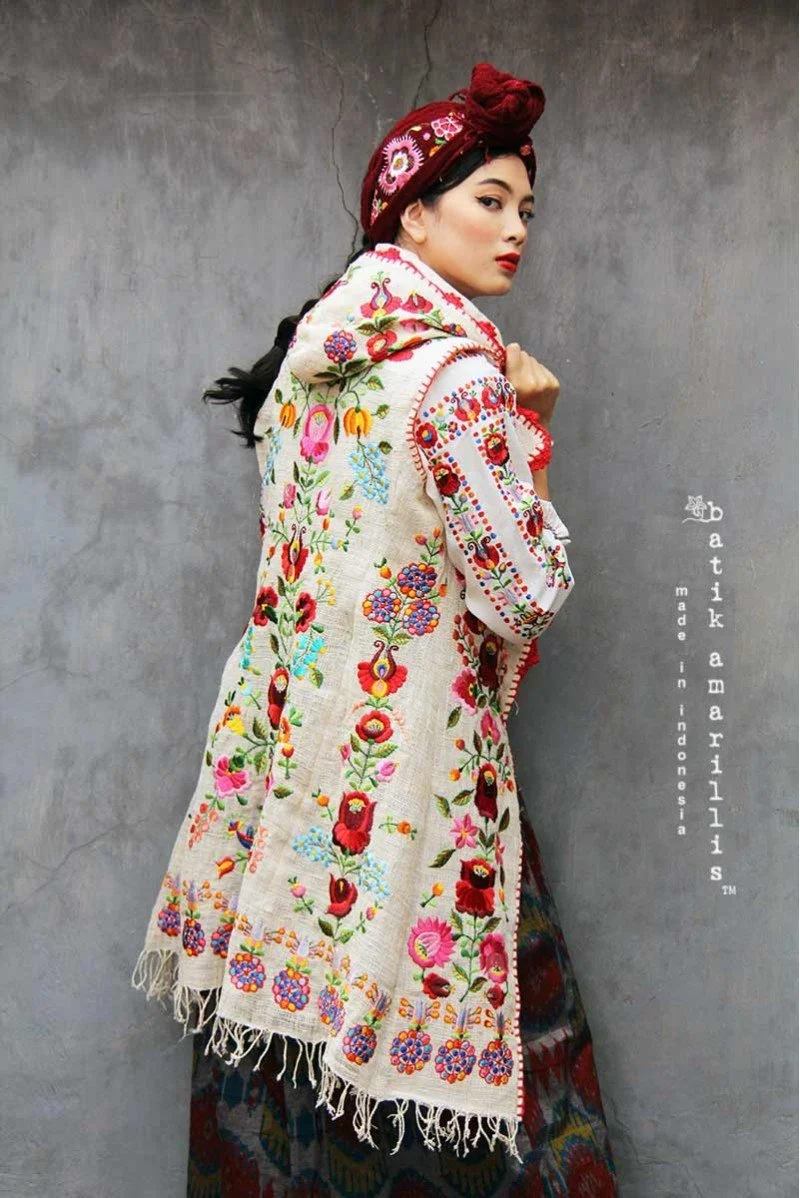Batik Amarillis
A Tapestry of Global Folk Traditions with Indonesian Soul
Founded in Bali by Selly Hasbullah, Batik Amarillis is an Indonesian slow fashion brand that blends traditional Indonesian textiles with global folk art traditions from around the world. The brand has a quirky aesthetic that combines a vintage romanticism with ethnic whimsy. Taking inspiration from global folk cultures, Batik Amarillis reinterpret them with an Indonesian twist, layering them print on print, with batik, embroidery, block printing, cut work and patchwork.
The look is reminiscent of an Indonesian interpretation of Pero or Stella Jean, with a bit of Frida Kallo thrown in for good measure, embodying the same exuberance and joy for colour, print and pattern.
From the geometric intricacies of Romanian embroidery to the painterly romance of a Matisse canvas, Batik Amarillis draws from a rich tapestry of cultural references. The collection echoes the journey of a global nomad or cultural tourist collecting artisanal treasures from around the world.
Batik Amarillis' collections are a vibrant celebration of cultural fusion and artisanal detail, with designs spanning a spectrum of traditional and contemporary styles.
Demure Javanese blouses are transformed by a riotous explosion of vivid floral embroidery.
Multi-patterned batik wrap culottes sit alongside Chinese-style Cheongsam blouses, reworked with contrasting embroidered bands, while long kimono and abaya-inspired coats feature wide sleeves and intricate mandala motifs.
Layered together, these pieces create a modern multicultural bohemian aesthetic. Embellishments abound, with fringes, pompoms, tassels, crochet details, and blanket-stitched edges lending an exuberance to the garments, alongside full skirts with embroidered panels and picot-edged hems. One of the most striking pieces features overlapping and cascading layers of embroidered panels, each resembling an oversized petal, which unfold to reveal a voluminous underskirt. It encapsulates the spirit of the collection—riotous, maximalist and unapologetically joyful.
Batik Amarillis began as a modest home-based venture in 2010, when founder Selly Hasbullah started experimenting with hand-stamped batik fabrics sourced from West Java. What started as a small creative endeavour quickly evolved into a more ambitious project. As the brand gained traction, Hasbullah expanded her artistic collaborations to include skilled batik artisans from Central Java. These artisans brought with them traditional techniques such as hand-drawn batik and batik coletan—a hybrid method that blends hand-stamped and hand-drawn elements. The fusion of these techniques has become a hallmark of Batik Amarillis' identity, reflecting a deep respect for heritage craftsmanship alongside a drive for artistic innovation.
Indonesia’s rich tradition of batik is woven deep into the cultural and religious fabric of the archipelago. Practiced for centuries, the intricate dyeing technique reached its artistic zenith in the royal courts of Yogyakarta and Surakarta, long before Islamization in the 1400’s.
Traditional batik favoured deep indigos and rich russets, typically set against backgrounds of ochre or cream. Patterns varied according to social group and region, with common motifs including flora, fauna, and geometric shapes. Each symbol carries symbolic meaning with the lotus representing purity for example and the tree representing strength and stability.
Maritime trade introduced new influences from Persia, China, and Europe, enriching Indonesia’s batik lexicon with motifs such as the peacock, phoenix, Japanese cherry blossoms, and European floral bouquets. These cross-cultural elements now feature frequently in Balinese batik.
Traditional batik is produced by skilled artisans painting fabric with a device called a tjanting, a small-spouted bowl filled with hot wax. Drawing freehand onto the fabric, the hot wax acts as a resist when the textile is dyed. The addition of different patterns and symbols can be layered between different dye applications, sometimes up to a dozen times, resulting in spectacular muti-hued layering of colour and pattern.
Hand stamp batik is a combination of using a hand carved stamp to apply the wax with the freehand application using the tjanting. This combination of techniques is quicker and more suitable for repeat patterns, resulting in a more cost-effective finished product than the exclusive use of the time-consuming hand drawn method.
Spanning more than 17,500 island, only 6,000 of which are inhabited, Indonesia has long been a hub for inter-island and global trade. This vibrant exchange has shaped a nation of immense ethnic, linguistic, and cultural diversity, fundamentally shaping the nation’s history. In recent years, Bali has emerged as a magnet for digital nomads, further cementing Indonesia’s role as a crossroads of creativity and tradition.
Batik Amarillis embodies the principles of slow fashion, blending sustainability with a commitment to preserving Indonesia’s rich textile heritage.
The brand’s ethos centres on the thoughtful reinterpretation of traditional materials and techniques, all sourced and crafted within Indonesia. From handwoven fabrics to dyeing, stamping, and batik production, every step of the process is rooted in local craftsmanship.
Cotton and linen are sourced in East Java, with rayon and mixed fibres sourced locally but imported along with silk from South Sulawesi.
The brand adheres to fair trade principles, partnering with artisans in East and Central Java to ensure ethical and equitable production.
Fabrics are handwoven, dyed, and printed before being transported to a small workshop in Kota Tangerang, ten minutes from Jakarta where the majority of the garments are assembled.
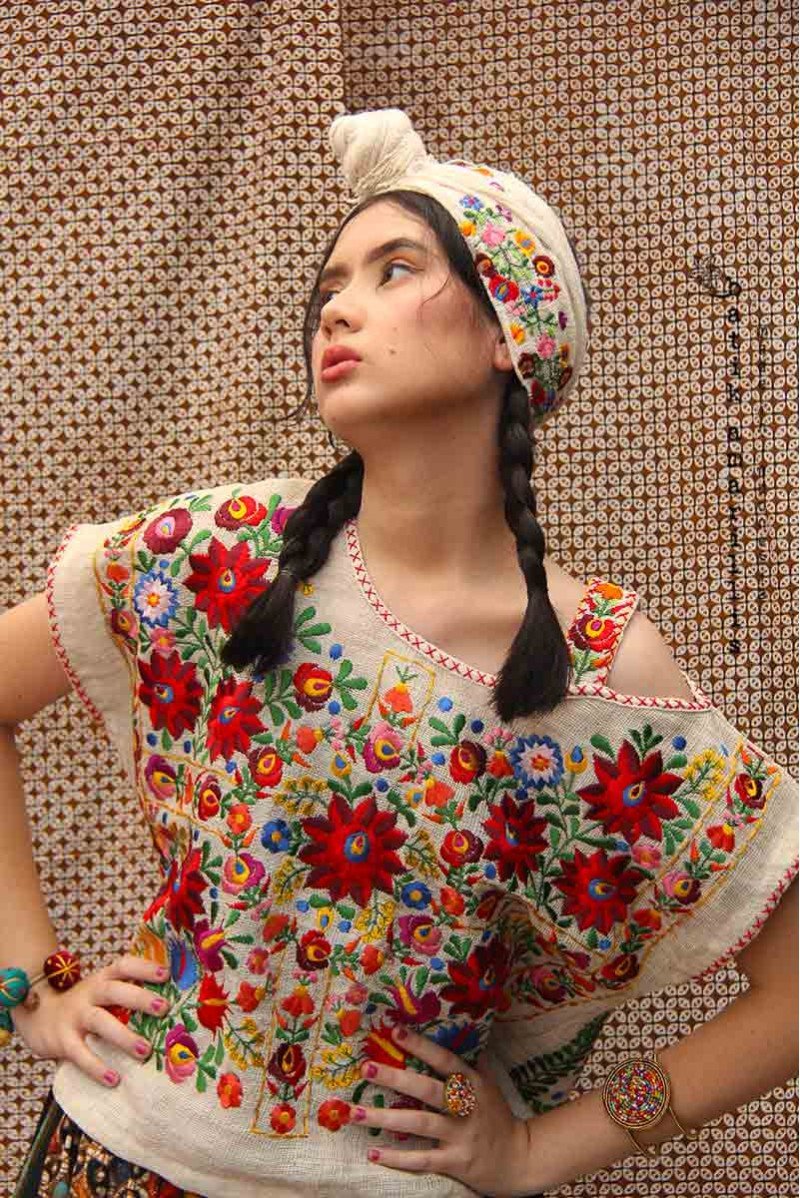
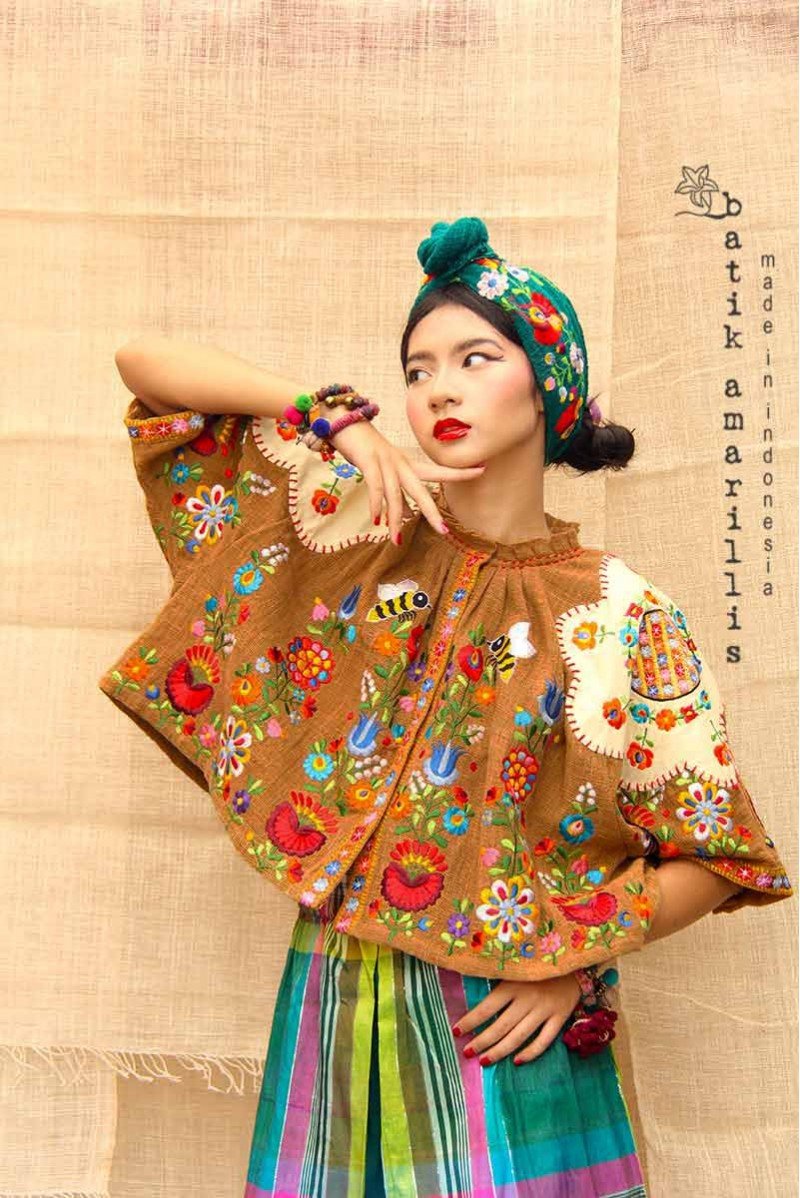
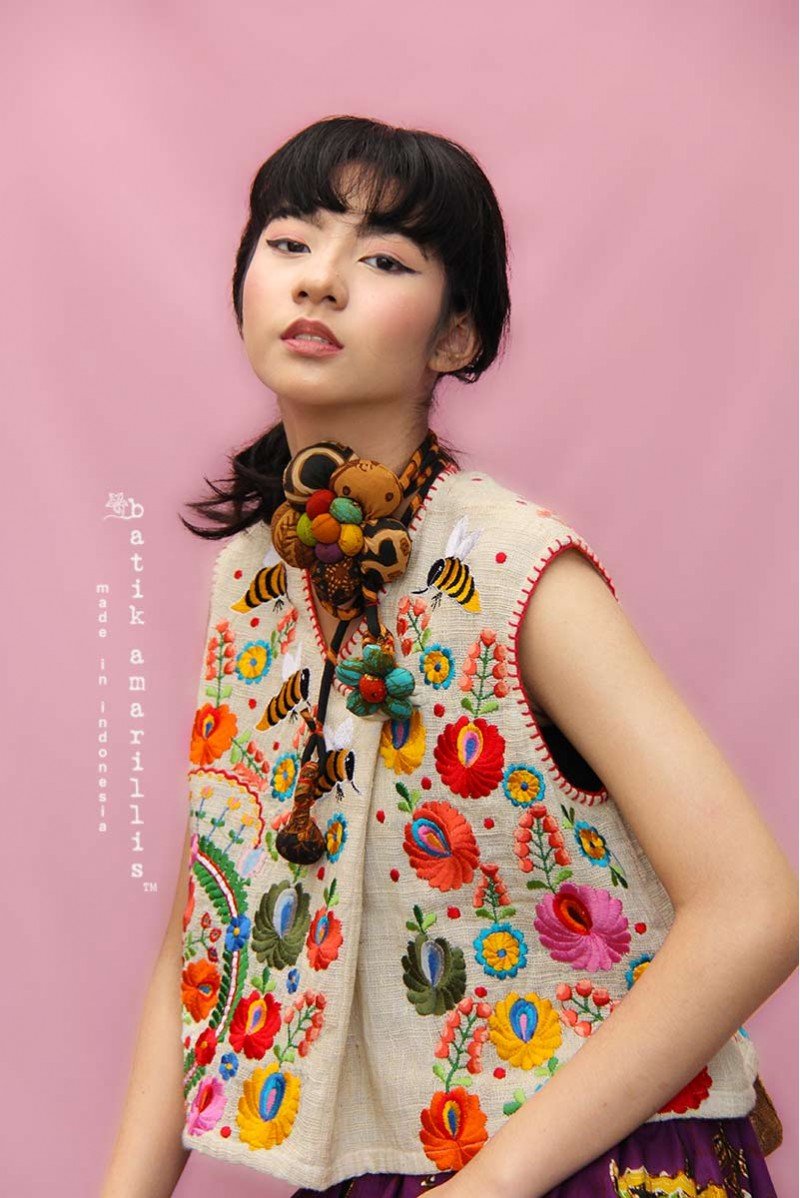
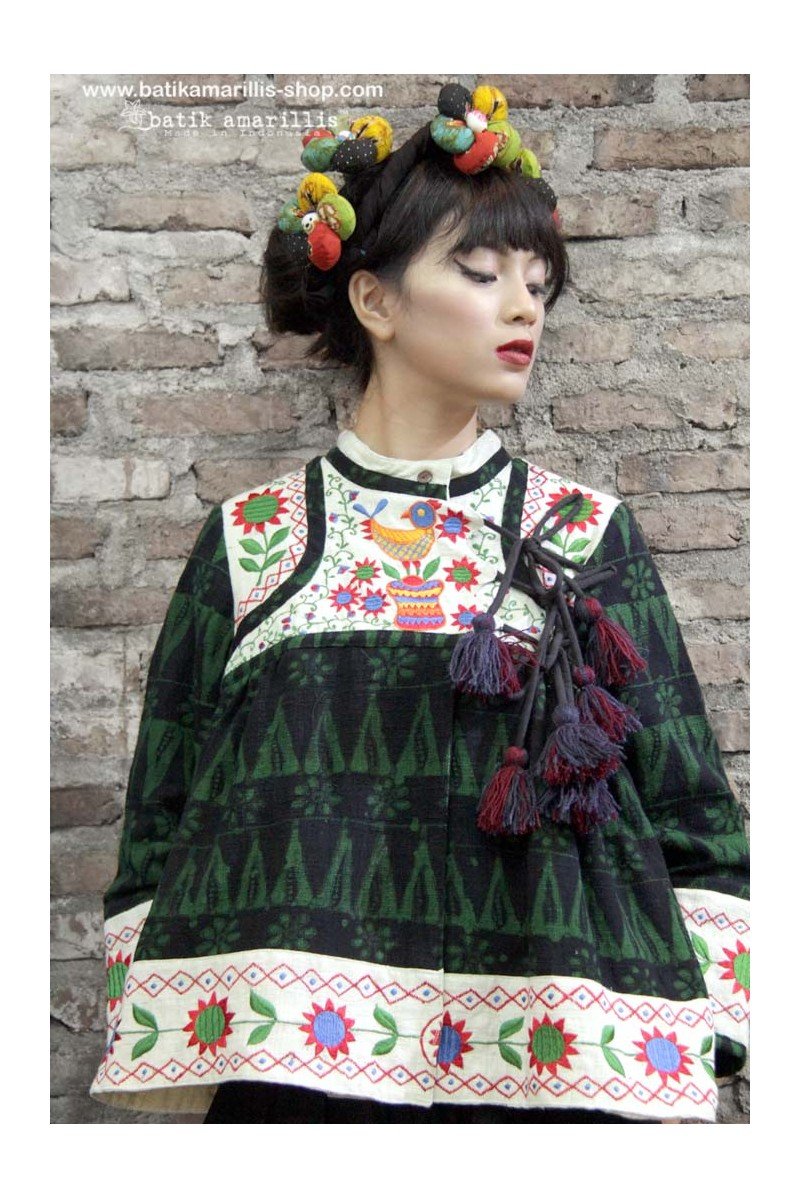
True to the values of slow fashion, Batik Amarillis releases designs in limited runs, with many one-of-a-kind creations never repeated, making for unique and collectible items.
Embodying an exuberant love for colour, texture, and tradition, Batik Amarillis stands out as a joyful expression of Indonesia’s evolving fashion narrative on the global stage.
Website: https://batikamarillis-shop.com
Instagram: @batikamarillis













